Sunscreen chemicals strike again. This time it is breast cancer. By Marc Sorenson, EdD.
Sunscreen chemicals may be some of our most debilitating environmental poisons.
Due to the worries regarding potentially deadly sunscreen chemicals, researchers are beginning to reassess the wisdom of using them.
Oxybenzone is one of the most widely used sunscreen chemicals and probably the most dangerous. Thus, we will present a few facts about the effects of Oxybenzone:
- First of all, research more than two decades old shows Oxybenzone is absorbed systemically after skin application. That evidence continues to accumulate, yet not all researchers agree that high systemic absorption of noxious chemicals is dangerous.
- Oxybenzone and other sunscreen chemicals are endocrine disruptors. Hence, they may have deleterious effects on the breast, prostate and other endocrine glands.
- These chemicals increase the production of deadly free radicals in the skin. Free radicals are associated with tissue and DNA damage and thought to be precursors to cancer.
- Sunscreen chemicals are agonists, which are substances capable of eliciting a response in hormonally regulated processes. Mammary gland development and cancer initiation are examples of responses to agonists.
- Sunscreen chemicals may lead to sunburns.
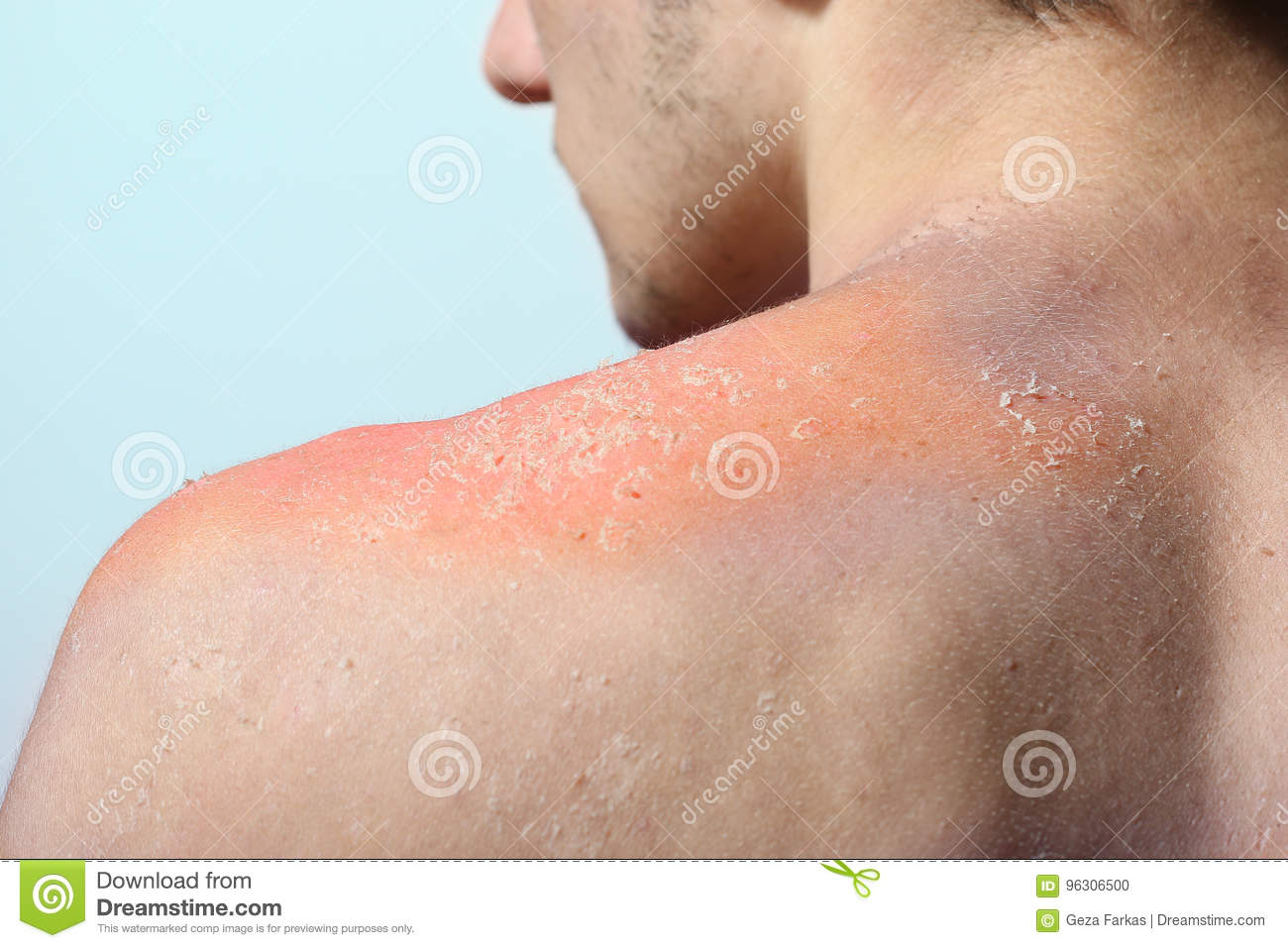
- These chemicals harm coral reefs.
- Since 1935, outdoor work has decreased profoundly (about 90%). In addition, sunscreen use has increased profoundly, and melanoma incidence has increased by about 3,000%. Seems like there is a disconnect here, no? [Read my book, Embrace the Sun, for the analysis.]
The latest, most noteworthy and alarming research on sunscreens.
Sunscreen chemicals, according to the propaganda, should prevent melanoma yet paradoxically, they do not. In addition, they should stop sunburns, yet, they do not. Another dilemma for sunscreen promoters is evidence that sunscreen toxicity is more than skin deep. Could sunscreen chemicals also promote initiation and growth of breast cancer? Endocrine-disrupting chemicals like oxybenzone and others are agonists for hormone sensitive cancers such as breast cancer. Consequently, researchers performed enlightening research to determine the relationship between breast cancer and oxybenzone. The investigation measured urine concentrations of oxybenzone in rodents on high-fat or low-fat diets exposed to that chemical.
The connection of oxybenzone and breast cancer
Results: “Benzophenone-3 exposure to mice [on high-fat diets] yielded urine levels similar to humans subjected to heavy topical sunscreen exposure.” The high-fat diet with oxybenzone promoted increased tumor cell proliferation, decreased tumor cell apoptosis [cancer-cell death], and increased tumor vascularity. In other words, it promoted growth and development of breast cancer.
The animals on a lifetime low-fat diet appeared to receive some protection with oxybenzone. Nevertheless, the researchers made the following statement: “Although benzophenone-3 [oxybenzone] seemed protective on low-fat diet, spindle cell tumors arising in these mice showed increased proliferation growth and decreased apoptosis.” My opinion is that this would predict increased potential for breast cancer and other cancers in the future.
Nearly all humans in this day are consuming high-fat diets. For those who are consuming low-fat diets, it would still be wise to avoid sunscreens.
For more information on sunlight and health, visit sunlightinstitute.org and read the book, Embrace the Sun.
Be sure to get your share of safe, non-burning sun exposure.
HAPPY SUNNING!
Poisons in the blood: Chemical Sunscreens.
Poisons in the blood. By Marc Sorenson, EdD.
Poisons are something we want to avoid and reverse. Am I correct in that assumption? Yet, some scientists believe that if sunscreens are poisons, humans should continue using them until they do more research. So, suppose that people die, or develop a disease as that research takes place. Maybe then, we change our minds and say, “it seems like we made a mistake.”
We seem to be a group of guinea pigs
Sunscreen researchers seem to conclude that they need to do more investigations on blood absorption of sunscreen poisons. They would do this research while the guinea pigs (we the people) still use the poisons.
Naming and calling out the poisons
These researchers studied six different sunscreen chemicals and measured their absorption and retention in the blood. These chemicals were avobenzone, oxybenzone, octocrylene, homosalate, octisalate and octinoxate. The subjects applied the sunscreens (with all of these chemicals) to 75% of the skin. The investigators then measured residual chemical concentrations at varying periods up to 21 days. Thus, they found all chemicals produced blood concentrations that were well above the Food and Drug (FDA) safety thresholds. In one case (oxybenzone), the concentration reached 360-times the FDA threshold level for safety in four days. In addition, all six chemical concentrations were significantly above the FDA threshold after only one application.
So should we use poisons that have concentrations 3,600% above the FDA threshold?
So what did these great scientists conclude? Here is their statement: “In the absence of clear data demonstrating harm, the use of chemical sunscreen may still be considered appropriate [Really?]. The use of mineral-based sunscreen is a well-established safe alternative. Elevating the science of the benefits and harms of sunscreen should be a priority. The sunscreen industry must begin conducting these safety studies as recommended by the FDA. Until then, the harms of absorption of sunscreen filters will remain uncertain.” I vehemently disagree; the harms of these toxic chemicals are well-known, and I personally do not want to absorb anything into my blood that exceeds the FDA safety thresholds by 3,600%. Chemicals that produce that excess are obviously poisons.
Are sunscreen chemicals either harmful or worthless?
The authors also indicate that sunscreens stop the development of skin cancer. Perhaps they have not read the research that indicates the direct opposite. For example, a meta-analysis published in the European Journal of Dermatology showed that there was no association between sunscreen use and skin cancer, including melanoma. Another study showed that those who used sunscreens had a far greater risk of sunburns than those who used other methods. Those other methods were seeking shade, wearing a hat or visor, and wearing long sleeves and pants. Another interesting fact is that those who used sunscreens had a 62% risk of sunburn. Those who did not use them but engaged in the aforementioned protective behaviors had a 24% risk.
What makes the term “poisons,” appropriate?
While these “researchers” are determining the sunscreen safety, and deciding if they are poisons, let us consider the research. Studies confirm that sunscreen chemicals are highly absorbed and then detected in urine and breast milk. This may cause systemic effects, including disruption of the endocrine system. In addition, pregnant mothers exposed to oxybenzone give birth to babies with low birth weights. This “programs” the developing child for greater risks of heart disease, hypertension, type-two diabetes and other diseases in adulthood. Furthermore, sun causes oxybenzone to become a potent allergen and to form free radicals. In fact, after one hour, more free radicals were created by sunlight contacting sunscreen, than sunlight on skin.” This is another indication that sunscreen use causes more damage than no sunscreens at all!
Gender-bending properties of sunscreen chemicals
Sunscreen chemicals also have potential “gender-bending” characteristics. They increase estrogen and decrease testosterone in men. In addition, they may be responsible for the nearly 50% reduction of sperm count in the last few decades. Sunscreen chemicals may cause the feminization of fish. in addition, environmental pollution by these and similarly structured chemicals may cause feminization in alligators and the gradual extinction of Florida panthers due to failure to breed. Sunscreens also increase the absorption of pesticides through the skin,
In conclusion, what are the environmental damages of sunscreen poisons?
Finally, the environmental damage may be substantial. Many beach areas have prohibited the use of sunscreen poisons due to concerns about coral-reef destruction.
So be careful when you next see a sunscreen advertisement. Protect yourself with clothing and shade when you feel that your sun exposure may become excessive. Sunscreen is not the answer. Regular, non-burning sun exposure is the answer.
Happy sunning.
Read more in our book, Embrace the Sun.
Melanoma risk is prevented by sun exposure. Case closed! -By Marc Sorenson, EdD
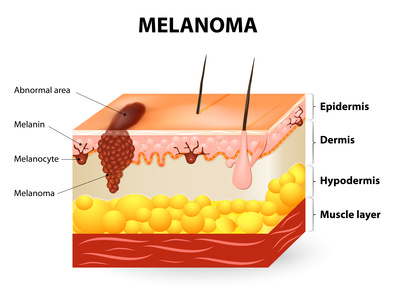
Melanoma risk between persons with high and low vitamin D levels
Melanoma risk is probably the most misunderstood topic in medicine. I recently wrote about the inverse association between vitamin D and melanoma. But I finally decided that my case had insufficient passion and surety. Consequently, I decided to write this addition and provide some new and restated information.
Melanoma risk is directly associated with low levels of vitamin D. That is the conclusion of recent study published in the European Journal of Cancer.[1] The investigators measured the blood vitamin D levels of 137 subjects who had been diagnosed with melanoma. They collected the blood samples at the time of diagnosis of the disease. Another group of 99 healthy subjects served as the control group. The investigators collected the samples of the control group between October and April. The scientists then compared the blood collections of the melanoma group with those of the control group. They then determined whether vitamin D levels had an association with melanoma risk.
The study produced convincing results regarding vitamin D and melanoma risk.
The results were as follows:
- The controls (no melanoma) had vitamin D levels 50% higher than the melanoma group (27.8 ng/ml vs. 18 ng/ml).
- 66.2% of the melanoma group had vitamin D “deficiency,” compared to only 15.2% of the health controls. The scientists defined vitamin D deficiency as being equal to or less than 20 ng/ml. So, the melanoma group had more than four-times the risk of deficiency.
- The scientists defined vitamin D “sufficiency” as being equal to or greater than 30 ng/ml. They found that only 7.4% of melanoma patients were sufficient, compared to 37.4% of healthy controls. Hence, the melanoma group had about one-fifth the likelihood of having sufficient D levels.
More scientific analysis on vitamin D measurements vs. melanoma risk
The scientists then adjusted the data for possible confounding factors such as age, sex and body mass. Then, they performed an analysis that showed the following:
- First of all, a significant inverse association was demonstrated with vitamin D sufficiency versus deficiency. Those who had sufficient levels had only 4% of the melanoma risk when compared to those who were deficient! Hence, this would indicate that those with the lowest vitamin D levels (after adjusting for confounding factors) had 25-times the melanoma risk!
- And, vitamin D insufficiency vs. deficiency was significantly inversely associated with melanoma. Those who were insufficient had a definite advantage over those who were deficient. They had only 13% of the melanoma risk.
Now, let’s get to the most important point about melanoma risk:
In addition, this research proves conclusively that sun deprivation is a major cause of melanoma. Therefore, vitamin D levels are surrogate measurements for sun exposure in nearly every case. And why do I say than this research conclusively proves that sun exposure reduces melanoma risk? Because about 90% of serum vitamin D is produced by sun exposure to the skin.[2] So, the aforementioned research is really research on sun exposure. It indicates that regular sun exposure leads to a profoundly higher vitamin D levels and therefore a profoundly reduced melanoma risk. So, let’s restate the facts about vitamin D, sunlight and melanoma.
- First of all, sunlight exposure to skin produces 90% of the vitamin D levels in the public.
- Secondly, the higher the vitamin D levels, the lower is the risk of melanoma.
- Therefore, high sun exposure reduces melanoma risk.
- Case closed!
Nevertheless, there is more corroborating evidence for the case.
In addition, here are a few more facts indicative of sun exposure’s protective effect against melanoma risk:
- Another supporting fact: 75% of melanomas occur on body areas that are seldom if never exposed to sunlight.[3]
- In addition, sun exposure decreased by 90% since 1935, while melanoma increased by 3,000%.[4]
- Also, in the past four decades, melanoma has increased 400% while sunscreen use also increased 400%.[5]
- Furthermore, sunburn is said to increase melanoma risk. And recent research shows that sunscreen use increases the risk of sunburn from 300-600%.[6]
Could sunlight reduce melanoma through photoproducts beyond vitamin D?
In conclusion: In my new book, Embrace the Sun (coauthored by Dr. William Grant), we note that sun exposure provides more than vitamin D. It also provides other photoproducts such as nitric oxide, serotonin, endorphin, and brain-derived neurotropic factor (BDNF). All of these photoproducts are vital to human health. Could these photoproducts have a positive and protective effect against melanoma risk beyond vitamin D? And, who is to say that the vitamin D produced by sunlight is not superior to that given in pill form?
Finally, this research gives us one more reason to embrace the sun safely without burning. And who would have thought that safe sunlight could be one of the best prophylactics against melanoma risk?
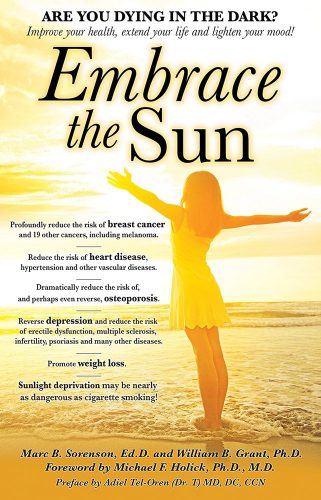
Happy sunning! Do not burn.
The book is available at Amazon: https://www.amazon.com/Embrace-Sun-Marc-B-Sorenson/dp/069207600X
[1] Cattaruzza MS, Pisani D, Fidanza L, Gandini S, Marmo G, Narcisi A, Bartolazzi A, Carlesimo M. 25-Hydroxyvitamin D serum levels and melanoma risk: a case-control study and evidence synthesis of clinical epidemiological studies. Eur J Cancer Prev. 2018 Feb 12. [Epub ahead of print]
[2] Reichrath J. The challenge resulting from positive and negative effects of sun: how much solar UV exposure is appropriate to balance between risks of vitamin D deficiency and skin cancer? Prog Biophys Mol Biol 2006;92(1):9-16
[3] Crombie IK. Distribution of malignant melanoma on the body surface.Br J Cancer. 1981 Jun;43(6):842-9.
[4] Melanoma International Foundation, 2007 Facts about melanoma. Sources: National Cancer Institute 2007 SEER Database, American Cancer Society’s 2007 Facts and Figures, The Skin Cancer Foundation, The American Academy of Dermatology.
[5] Joseph C DiNardo and Craig A Downs. Should We Use Products Containing Chemical UV Absorbing Sunscreen Actives on Children? Clin Dermatol Res J 2019, 4:1.
[6] Kasey L. Morris, PhD; Frank M. Perna, EdD, PhD. Decision Tree Model vs Traditional Measures to Identify Patterns of Sun-Protective Behaviors and Sun Sensitivity Associated With Sunburn. JAMA Dermatol. Published online June 27, 2018.
Chemical sunscreen is toxic and hazardous. By Marc Sorenson, EdD

Chemical sunscreen has been mentioned in new medical and scientific papers lately, and the research is alarming. Yet, many governments and medical associations have not gotten the message. Consequently, I lately blogged about the idea being promoted in Australia and New Zealand, that sunscreen use is absolutely indispensable. Due to this promotion, a major Australian newspaper stated, “Make it like brushing your teeth.” That seems like a terrific slogan to line the pockets of chemical sunscreen manufacturers, no? But, it is most noteworthy that sunscreen use may lead to disability and even death.
A dermatology journal study takes chemical sunscreens to task.
But maybe the dermatology profession is starting to catch on. And Surprisingly, one of the best treatises on chemical sunscreen was written by dermatologists. It is rather interesting that they were strongly questioning the wisdom of chemical sunscreens. Furthermore, the study was published by the Clinical Dermatology Research Journal and was entitled, Should We Use Products Containing Chemical UV Absorbing Sunscreen Actives on Children?[1] This is amazing, because most dermatologists are loath to say anything about sunscreen that is not positive.
The salient points on chemical sunscreens from this research paper:
- A 2018 report from the American Cancer Society demonstrated the following: after 40 years of sunscreen use (1975-2014) melanoma increased 4 fold in men and 3 fold in women. (So how does that information lead to the usual mantra that we should always be covered in sunscreen?)
- Also, all six sunscreen chemicals (chemical UV absorbers) considered in this paper are known to be endocrine disrupting chemicals (EDCs). And oxybenzone, one of the worst offenders, has been shown to cause a significant decrease in sperm density. (Since sperm counts have dropped rapidly in the past few decades among men, could it be due to chemical sunscreen use?)
More facts about chemical sunscreens:
- Also, environmental exposure to chemical sunscreen in adolescent boys (ages 12-19) was associated with significantly lower total serum testosterone. Therefore, these chemicals would, as mentioned, produce lower sperm density.
- In addition, chemical sunscreen passes through human skin. (About 8% of Oxybenzone finds its way through the skin. It seems like using these noxious products is something most of us would want to avoid!)
Other research on chemical sunscreens that may interest you:
Another important study demonstrates that chemical sunscreen does not help prevent melanoma, and, it could be a cause. [2] Rather surprising, no? Most of all, the researchers’ goal was to determine the efficacy of sunscreens in preventing melanoma. Hence, they compared melanoma rates with sales in 24 countries in Europe, during the period of 1997-1999 to 2008 and 2012. They thus found that higher income people had significantly higher melanoma incidence. And, increased use of chemical sunscreens had not prevented higher income populations from being at higher risk of melanoma. Consequently, we see this equation: Higher sunscreen use=higher melanoma risk and therefore higher melanoma death risk!
But does chemical sunscreen prevent skin cancer?
So, the following research probably deflated the egos of chemical sunscreen manufacturers. A meta-analysis of 20 studies showed what many probably not expect. Because, both melanoma and non-melanoma skin cancers were not prevented by chemical sunscreens.[3] It is especially relevant that they were associated with a slight increase in risk, though this increase was not considered significant. We could probably say, from the information presented, that sunscreens are worthless at best, and dangerous at worst. So, who benefits? The manufacturers and distributors. And who suffers? The people, because they use the noxious products.
Does chemical sunscreen even prevent sunburns?
And now, another recent scientific study corroborates this conclusion (worthless at best, dangerous at worst) regarding chemical sunscreen.[4] The authors expected a different outcome—an outcome exactly opposite of what they found. The goal was to discover which sun-protection behavior was most effective in preventing sunburn. Hence, they designed a cross-sectional investigation using a nationally representative sample of about 32,000 US adults.
Excellent research method on chemical sunscreens
The researchers interviewed each participant, and they did it in person. This is especially relevant when attempting to achieve the most accurate results possible. We can conclude, therefore, that their findings regarding sunscreen use and other “sun-protective” behaviors have validity. The measured behaviors (beyond sunscreen use) were seeking shade, wearing a hat or visor, and wearing long sleeves and/or pants.
Results of the sunburn and chemical sunscreen study.
In addition, the researchers identified the subjects as sun-sensitive individuals or non-sun-sensitive individuals. Fifty-four percent of the subjects were women, and 15,992 of all individuals were considered sun-sensitive (fair skinned). Those who used only sunscreen had the highest sunburn likelihood (62.4%). The group with lowest likelihood of sunburn did not use chemical sunscreen but engaged in the other protective behaviors (24.3% sunburned).
A surprising conclusion that using chemical sunscreens was the worst choice!
In addition, among 12,566 non–sun-sensitive individuals, those engaged in all 4 protective behaviors had the lowest sunburn risk (6.6%). The highest likelihood of sunburn was among those who only used sunscreen (26.2%). Dr. Kasey Morris, the study leader, was stunned. She made the following statement: “The most surprising and counterintuitive finding was that regular sunscreen use, in the absence of other protective behaviors, was associated with the highest likelihood of sunburn.”[5]
The bottom line regarding chemical sunscreen and sunburns
So, you should now understand this fact: chemical sunscreen use associates closely with sunburning. [3] That fact has actually been known since 2014.[6] Therefore, sunscreen is not a good product. Of course, we should protect ourselves from overexposure to sunlight. But, we should do it the way God (or Mother Nature, if you prefer) intended it: 1. Cover up with clothing when you start to redden, 2. Seek shade. 3. Go indoors for awhile. And remember that good health depends on obtaining regular, non-burning sun exposure. Happy sunning!

Read more on sunscreens and toxicity in my new book, Embrace the Sun, available at Amazon. https://www.amazon.com/Embrace-Sun-Marc-B-Sorenson/dp/069207600X
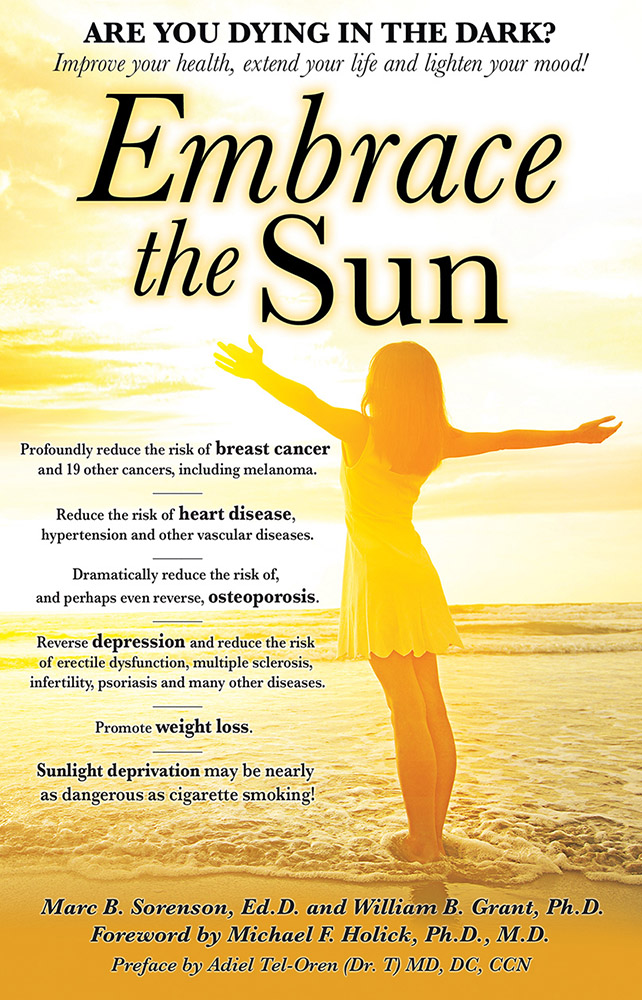
[1] DiNardo JC and Downs CA, Should We Use Products Containing Chemical UV-Absorbing Sunscreen Actives on Children? Clin Dermatol Res J 2019, 4:1.
[2] Williams SN, Dienes KA. Sunscreen Sales, Socio-Economic Factors, and Melanoma Incidence in Northern Europe: A Population-Based Ecological Study. SAGE Open October-December 2014: 1–6.
[3] Elizabet saes da SILVA, Roberto TAVARES, Felipe da silva PAULITSCH, Linjie ZHANG. Eur J Dermatol 2018; 28(2): 186-201.
[4] Kasey L. Morris, PhD; Frank M. Perna, EdD, PhD. Decision Tree Model vs Traditional Measures to Identify Patterns of Sun-Protective Behaviors and Sun Sensitivity Associated With Sunburn. JAMA Dermatol. Published online June 27, 2018.
[5] https://www.reuters.com/article/us-health-sunburns/sun-sensitive-people-need-more-than-sunscreen-to-avoid-sunburn-idUSKBN1K02RB
[6] https://www.webmd.com/beauty/news/20110714/sunscreen-users-more-likely-burn#1
What do you know about melanoma?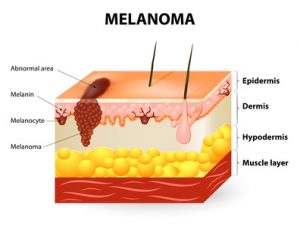
May is Melanoma Awareness Month, Therefore, we will discuss some truths to be aware of:
- First of all, seventy-five percent of these cancers occur on areas of the body that are seldom or never exposed to sunlight.[1] For example, research has shown that melanomas in women occur primarily on the upper legs, and in men more frequently on the back—areas of little sun exposure.
- Most noteworthy, in the U.S., sun exposure has decreased by about 90% since 1935. In the same time, melanoma incidence has increased by 3,000%! [2] [3] [4]
Dr. Diane Godar furnishes this exceptionally important melanoma information:[5]
- The same as in the US, while sun exposure in Europe has profoundly decreased, there has been a spectacular increase in the disease.
- Men who work outdoors have about half the risk as men who work indoors. Hence, sun exposure could not be the cause.
- in addition, outdoor workers, while receiving 3-9 times the sun exposure as indoor workers, have had no increase in melanoma since before 1940, whereas the incidence in indoor workers has increased steadily and exponentially.
- Especially relevant is that sunscreen invention, along with its steadily increasing use, has not reduced the risk of melanoma. Rather, the disease has increased as sunscreen use has increased.
- Increasing melanoma incidence significantly correlates with decreasing personal annual sunlight exposure.
- Also, outdoor workers get many sunburns but still have dramatically lower risk of contracting the disease.
So, since melanoma increases as sun exposure decreases, should we continue to blame the sun?
Here are more facts you should know about the causes of melanoma:
- First of all, people in the highest quintile (fifth) of alcohol consumption have a 65% increase in risk.[6]
- Weekly meat consumption increases the risk of melanoma by 84% and daily fruit consumption reduces the risk by nearly 50%.[7]
- Furthermore, those with the highest levels of blood PCBs have 7-times the risk compared to those with the lowest levels.[8]
- Recent use of Viagra is associated with an 84% increase in risk, and long-term use of the drug is associated with a 92% risk increase.[9]
- Finally, there is a positive association between melanoma and obesity.[10]
Furthermore, Dr. Adele Green found that the strongest risk factor for both limb and trunk melanoma was moles. The presence of more than 10 moles on the arm predicted a 42-times increased risk.[11]
Therefore, please stop blaming the sun. Safely embrace the non-burning sun and reduce your risk of melanoma.
References:
[1] Crombie IK. Distribution of malignant melanoma on the body surface.Br J Cancer. 1981 Jun;43(6):842-9.
[2] Melanoma International Foundation, 2007 Facts about melanoma. Sources: National Cancer Institute 2007 SEER Database, American Cancer Society’s 2007 Facts and Figures, The Skin Cancer Foundation, The American Academy of Dermatology.
[3] Ian D. Wyatt and Daniel E. Hecker. Occupational changes in the 20th century. Monthly Labor Review, 2006 pp 35-57: Office of Occupational Statistics and Employment Projections, Bureau of Labor Statistics.
[4] US Congress, Office of Technology Assessment, Catching Our Breath: Next Steps for Reducing Urban Ozone, OTA-O-412 (Washington, DC: US Government Printing Office, July 1989).
[5] Stephen J Merrill, Samira Ashrafi, Madhan Subramanian & Dianne E Godar. Exponentially increasing incidences of cutaneous malignant melanoma in Europe correlate with low personal annual UV doses and suggests 2 major risk Factors. Dermato-endocrinology 2015;7:1
[6] Millen AE, Tucker MA, Hartge P, Halpern A, Elder DE, Guerry D 4th, Holly EA, Sagebiel RW, Potischman N. Diet and melanoma in a case-control study. Cancer Epidemiol Biomarkers Prev. 2004 Jun;13(6):1042-51.
[7] Gould Rothberg BE, Bulloch KJ, Fine JA, Barnhill RL, Berwick M. Red meat and fruit intake is prognostic among patients with localized cutaneous melanomas more than 1 mm thick. Cancer Epidemiol. 2014 Oct;38(5):599-607.
[8] Gallagher RP, Macarthur AC, Lee TK, Weber JP, Leblanc A, Mark Elwood J, Borugian M, Abanto Z, Spinelli JJ. Plasma levels of polychlorinated biphenyls and risk of cutaneous malignant melanoma: a preliminary study. Int J Cancer. 2011 15;128(8):1872-80.
[9] Li WQ, Qureshi AA, Robinson K, Han J. Sildenafil use and increased risk of incident melanoma in US men: a prospective cohort study. JAMA Intern Med. 2014 Jun;174(6):964-70C
[10] Karimi K, Lindgren TH, Koch CA, Brodell RT. Obesity as a risk factor for malignant melanoma and non-melanoma skin cancer. Rev Endocr Metab Disord. 2016 Sep;17(3):389-403.
[11] Green AC, Siskind V. Risk factors for limb melanomas compared with trunk melanomas in Queensland. Melanoma Res. 2012 ;22(1):86-91.
Today I happened to run across research that stunned me while also making me very happy. A study from New Dehli, India has concluded that babies should sunbathe at least 30 minutes weekly.[1] The reason is that most mothers, and their babies are severely vitamin D deficient, and that rickets, which is a vitamin D deficiency disease, is rampant in that country. The authors said that 90% of the vitamin D requirement could be met from sun exposure. That is a strange statement, considering that sun exposure could easily take care of 100% of the vitamin D requirement.
Oher good things to come from this study: the recommendation for the best sunbathing time was between the hours of 10:00 AM and 3:00 PM, exactly the times that most dermatologists say we should avoid like the plague.
A downside of the report was that the scientists recommended on 40% of the body surface to receive sun exposure. Whole-body exposure would have provided a lot more vitamin D and in a much shorter period of time. Another downside was the recommendation to achieve a serum vitamin D level of 20 ng/ml, which is woefully low. They should have recommended at least twice that level.
The report stated that “sunning” the babies would benefit more than 16 million born each year in India.
It is interesting that sometimes it takes a disaster like rickets for the truth to come full-circle and for common sense to prevail. For example, In the 1930s, when the medical community had not yet bought into the sun phobia of today, the Department of Labor printed a pamphlet called Sun for Babies in which they made this statement: “Every mother who wishes her baby to have robust health should give him regular sun baths from early infancy until he is old enough to play in the sun himself. If the sun’s rays are to help the baby grow properly and to prevent rickets, they must fall directly on the skin and tan it.” That would not be popular advice today, and it is likely that any parent practicing “baby tanning” would be arrested for child abuse. Since the 1930’s the dermatological profession has come a long way… in the wrong direction.
Other research related to bone growth in children shows that those who are growth-hormone deficient, and are being treated for that deficiency, grow more rapidly during summer months.[2] In a one-year study using 118 children from 14 countries as subjects, growth was measured and compared to the amount of sun received by the children. Those who were exposed to more sun had faster growth.
The truth will prevail. The advice to keep children out of the sun has been an unmitigated disaster. Just be sure to keep them safe from sunburn.
[1] Research matters. 9/14/17. https://researchmatters.in/shots/infants-should-sunbath-30-minutes-week-recommends-study.
[2] De Leonibus C, Chatelain P, Knight C, Clayton P, Stevens A. Effect of summer daylight exposure and genetic background on growth in growth hormone-deficient children. Pharmacogenomics J. 2015 Oct 27.[Epub ahead of print].
Vitamin D deficiency is increasing rapidly in spite of the fact more people are taking supplements than ever before. According to an article in the Daily Mail (UK), 75% or the U.S. population are deficient in Vitamin D, and among African Americans, 95% are deficient.[1] Recent research in the Journal of the American Osteopath Association places the blame for this deficiency squarely on two factors: (1) sun deprivation through sunscreen use, and (2) chronic diseases.[2]
The paper makes perfect sense. It is known sunscreen use can inhibit up to 99% of the production of vitamin D by the skin.[3] And of course, chronic diseases themselves may be the effect of sunlight/vitamin D deficiency. So, in trying to prevent sunburn and skin damage, we set ourselves up for a spate of illnesses.
Caution is the best prevention for sunburn. One should never stay out until the skin turns red, and in the beginning stages of sun exposure, one should gradually increase it until a tan develops. A tan is a sign the skin is protecting itself against burning. In a landmark paper published in 1993 in the journal Preventive Medicine, Dr. Gordon Ainsleigh stated, “As melanoma research has demonstrated, the best prevention is regular exposure, thereby maintaining a protective tan and high vitamin D blood and tissue levels.”[4] And we now know that sun exposure produces photoproducts beyond vitamin D, such as nitric oxide, endorphins, and serotonin. Staying out of the sun, or blocking its rays, are recipes for health disasters. Queensland, Australia has vigorously promoted sunscreen for decades, and Queensland now has one of highest rates of melanoma in the world,[5] along with a rate of vitamin D deficiency which is becoming critical.[6] The answer from the dermatologists, of course, is to prescribe more sunscreen and frighten more people out of the sun. Is that not the most counterintuitive decision of the century?
A much better choice than sunscreen is to simply leave the sun when it becomes too intense, or cover up with light, reflective clothing. Enjoy the sun, but do it carefully and never burn. And don’t destroy all the salubrious effects of the sun by using a noxious sunblock.
[1] http://www.dailymail.co.uk/health/article-4462730/Too-sunscreen-making-vitamin-D-deficient.html?ITO=1490&ns_mchannel=rss&ns_campaign=1490
[2] Pfotenhauer KM, Shubrook JH. Vitamin D deficiency, its role in heath and disease, and current supplementation recommendations. J Am Osteopath Assoc. 2017; 117(5):301 – See more at: http://www.ajmc.com/newsroom/sunscreen-use-chronic-disease-linked-to-vitamin-d-deficiency#sthash.Yfx4Rbny.dpuf
[3] Matsuoka LY, Ide L, Wortsman J, MacLaughlin JA, Holick MF. Sunscreens suppress cutaneous vitamin D3 synthesis. Journal of Clinical Endocrinology & Metabolism 1987; 64:1165-68.
[4] Ainsleigh G. Beneficial effects of sun exposure on cancer mortality. Preventive Medicine 1993;22:132-140.
[5] Garland CF, Garland FC, Gorham ED. Could sunscreens increase melanoma risk? American Journal of Public Health, Vol. 82, No. 4, April 1992, pp. 614-15.
[6]Van der Mei IA, Ponsonby AL, Engelsen O, Pasco JA, McGrath JJ, Eyles DW, Blizzard L, Dwyer T, Lucas R, Jones G. A high vitamin D insufficiency across Australian populations and latitude. Environmental Health Perspect 2007;115:1132-39.
By Marc Sorenson, EdD. Sunlight Institute…
Canada has a long season each year in which vitamin D from sunlight is not available. Due to the northern latitude of Canada, May through October is the only period when vitamin D can be produced in response to sun exposure to the skin. Therefore, a new press release from the Vitamin D Society recommends to protect health by building up vitamin D during the summer. Vitamin D from the summer sun helps to prevent serious diseases such as cancer, cardiovascular diseases, diabetes, multiple sclerosis and others.
Dr. Reinhold Vieth, the scientific advisor for the Society, states the following: We often assume that the health benefits of sunshine are solely due to vitamin D, but that is not proven yet. In other words, it is likely that sunshine does more for our bodies than just produce vitamin D.”
Dr. Vieth is correct. Vitamin D is only one of several products of sun exposure. Others are nitric oxide, which helps prevent vascular problems, and serotonin and endorphins that enhance mood. It is likely that there are many more products of sun exposure that enhance human health.
The Society recommends 6 guidelines for safely enjoying the sun and its health benefits:
- Be moderate, and don’t burn.
- Sun exposure can produce vitamin D only during the mid-day hours, so be outside between 10 AM and 4 PM.
- Know your skin type and risk of burning. Red hair and very light skin predict a greater risk of burning. (Also remember that dark skin needs more sun exposure to produce vitamin D).
- A gradual build-up of a tan protects the skin from burning.
- When the skin begins to redden, it is time to stop the sun exposure.
- Frequent but shorter sun exposure times are better for producing vitamin D.
Since about 35% of all Canadians do not meet suggested vitamin D requirements, sun exposure is essential to reverse that statistic.
So Canadians, safely enjoy the sun this summer!
To read the entire press release, go to this link: http://www.vitamindsociety.org/press_release.php?id=44
Nearly every article written on the addictive influences of sun exposure or other UV exposure takes a negative tack. We need to realize that some addictions are very good for us. Some runners are addicted to getting up every morning and going on the morning run. If one wants to be slim and fit, that is certainly a positive addiction. Hugging my wife is also a positive addiction; her touch helps to heal me and fills me with an addictive love. I’m also addicted to hiking in the pines and aspens near my Nevada ranch. There is little more exhilarating than being at 11,000 feet elevation and breathing the clear mountain air during a hike. You probably have your own positive addictions.
Sun exposure can certainly become an addiction, but is that all bad? In my opinion, no. When done habitually, sunning reduces the risk of melanoma and reduced the risk of myriad harmful diseases. It is therefore a positive and salubrious addiction.
A recent study, somewhat negative in tone, demonstrates that UVB light, contained in both sun lamp radiation and sun radiation, triggers the production of beta endorphins, one of the feel-good chemicals, sometimes called a “reward” chemical, that makes us want more.[i] The researchers used 12 healthy volunteers and used a UVB lamp to deliver a dose of narrow-band UVB light. Skin samples were taken before and after the exposure. After 24 hours, the skin samples showed an increase in endorphin levels in 11 of the twelve subjects.
Sun exposure enhances health. A twenty-year study demonstrated that the risk of death among people who were sun-seekers was only half that of those who received little sun.[ii] The researchers made this statement: “In both models the summary sun exposure variables showed a ‘dose-dependent’ inverse relation between sun exposure and all-cause death.”
Obviously, habitual sun exposure produces a positive addiction, and that is good! God (or nature if you prefer) has programmed our bodies to seek the sunlight in order to help provide a healthful and rewarding life. “Habitual” is the operative word here. An occasional blast of sun that causes burning is definitely not recommended. Be careful and enjoy your positive addictions.
[i] Jussila A, Huotari-Orava R, Ylianttila L, Partonen T, Snellman E. Narrow-band ultraviolet B radiation induces the expression of β-endorphin in human skin in vivo. J Photochem Photobiol B. 2016 Feb;155:104-8.
[ii] Pelle G. Lindqvist, Elisabeth Epstein, Mona Landin-Olsson, Christian Ingvar, Kari Nielsen, Magnus Stenbeck & Håkan Olsson. Avoidance of sun exposure is a risk factor for all-cause mortality: results from the Melanoma in Southern Sweden cohort. J Intern Med. 2014 Jul;276(1):77-86.
By Marc Sorenson, EdD, Sunlight Institute
Sunlight exposure is said to cause melanoma, which is false, as we have said many times in this blog. However, other cancers are seldom mentioned by those who would frighten us away from the sun, because the facts don’t fit their agenda. Most major cancers are profoundly reduced by sunlight. Let’s first take the example of prostate cancer (PC) risk, which has been known for at least 15 years to be associated with low sunlight exposure.
Researchers reporting their findings in the British medical journal, Lancet, compared sunlight-exposure history to the risk of contracting the disease, and they found that children who sunburned had about an 82% reduced risk of contracting PC as adults.[1] Of course, no one is recommending sunburn as a preventive measure against prostate cancer. In this case, sunburn served as a surrogate measure for a lot of sunlight exposure. Other measures of sunlight exposure similarly showed protective effects. Regular holidays in warm areas were associated with a 51% reduced risk; a high sunbathing score was associated to a 17% reduced risk, and very low sunlight exposure was associated to a tripling of risk. The researchers stated the following: “These findings are compatible with UVR having a protective role against prostate cancer.”
So why do the anti-sun groups such as the American Academy of Dermatology and the Skin Cancer Foundation mention only skin cancer and neglect to give life-saving information regarding other cancers such as PC? That is an easy answer. Both organizations make big dollars by keeping us in the dark. Follow the money to the sunscreen manufacturers, who have a cozy financial relationship with these supposedly “clean” cancer organizations.
So men, safely sunbathe and get outdoors as much as possible. Your prostate will love you for it.
[1] Luscombe CJ, Fryer AA, French ME, Liu S, Saxby MF, Jones PW, Strange RC. Exposure to ultraviolet radiation: association with susceptibility and age at presentation with prostate cancer. Lancet. 2001 Aug 25;358(9282):641-2.




